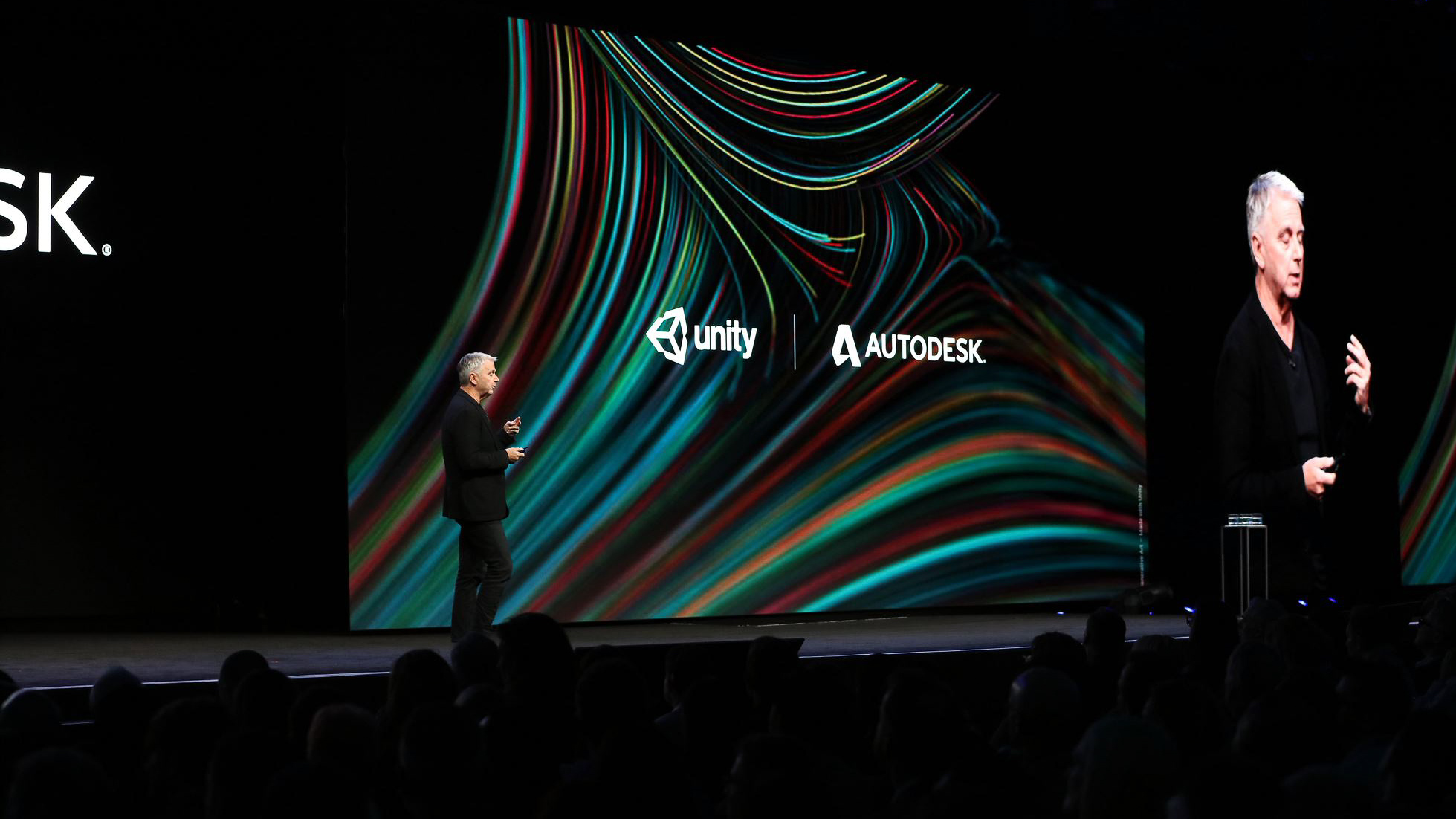
Following an action-packed first two days, Autodesk University came to a close Thursday. While the main keynote on Tuesday contained a lot of information about Autodesk’s priorities and future plans, the tail-end of the conference gave us a glimpse at how the software company is practicing what they are preaching. Here are BuiltWorlds’ takeaways from the homestretch of Autodesk University.
1. Autodesk is expanding its collaboration with Unity
A little over a year ago, it was announced that Autodesk would be working with Unity Technologies, a tech company most famous for its creation of the Unity video game engine, which runs games like Pokemon Go and Super Mario Run. Originally, the two companies collaborated to strengthen the link between Unity’s platform and Autodesk tools such as 3ds Max and Maya, to make the creation of 2D, 3D, AR, and VR experiences easier.
This year, during the AEC Keynote address, Autodesk CEO Andrew Anagnost was joined by Unity’s CEO John Riccitiello to announced a further development with this collaboration. Beginning in Q2 2019, there will be native export of Revit models to Unity, which will allow Unity’s AR and VR technology to be applied to CAD data. Users can turn Revit models into fully-fleshed, digital replicas of a particular project.
“Imagine the power of AR and VR, and what it can give you as you design and build your projects,” said Riccitiello.
Riccitiello gave a short demonstration, showing what this new integration will be able to do for construction projects. Giving a digital tour of Unity’s London offices, he showed how BIM data can be overlaid on the digital recreation, and certain factors can be changed such as the day and night cycle.
It was an exciting announcement and the hall was practically buzzing after the demonstration.
2. AR/VR is here to stay and being used in many different ways
At BuiltWorlds HQ in Chicago, we’ve spent a big chunk of time talking about the practical applications of AR/VR and what the future holds for the technology. Every year, it seems there is a new technology that enters built space, captures everyone’s attention, and gets significant air-time. Last year, you couldn’t go longer than a half a day without reading or hearing about drones. This year, AR/VR has really made some waves in the industry and taken the mantle drones inhabited in 2017.
While at Autodesk University, one of the things that stood out was the huge variety of uses for AR/VR. In a panel centered around prefabrication, Rotimi Seriki, a design/visualization specialist at HOK--a design, architecture, and engineering firm--discussed how the company uses AR/VR on prefab projects. Early on a jobs research phase, HOK uses the technology to study precast panels to see their qualities and how they work.
“You can think from the perspective of a contractor and figure out how the installation will be done in the field, and design around that,” Seriki said.
Last night, I actually tried VR for the first time during a media reception Autodesk hosted at the Paris Hotel. The company is working with the city of Paris to develop a VR duplicate of Eiffel Tower and the Champ de Mars. Using a headset, I was able to walk around the tower, go up to its point, and leisurely stroll through the Champ de Mars. Now, maybe this is because the demo was literally the first time I used the technology, but I was completely taken. I see some many amazing opportunities for this the application of AR and VR in the built space, especially when you can overall important data--like BIM information.
3. There is a strong demand for prefabrication
One point that was touched on over and over again throughout Autodesk University is the fact that Earth’s population is exploding, which means that we need to build more houses to accommodate the growing demand.
“We have a housing crisis,” said Naomi Porat, a strategic advisor for Factory_OS, which does modular building in the residential space, during a panel on prefabrication.
Porat said that Factory_OS’s business has steadily increased, and people are becoming more and more interested in prefabrication as a solution to the current housing crisis.
“We got demand for 40,000 units in the first few months of our website going live,” she said. “
Porat believes the industry is changing, and that it’s moving toward a place where off-site construction is becoming more normal.
“We are at a pivot point in our industry, and we are moving offsite to offsite construction,” she said. “It’s exciting to see the industry changing.”


Discussion
Be the first to leave a comment.
You must be a member of the BuiltWorlds community to join the discussion.